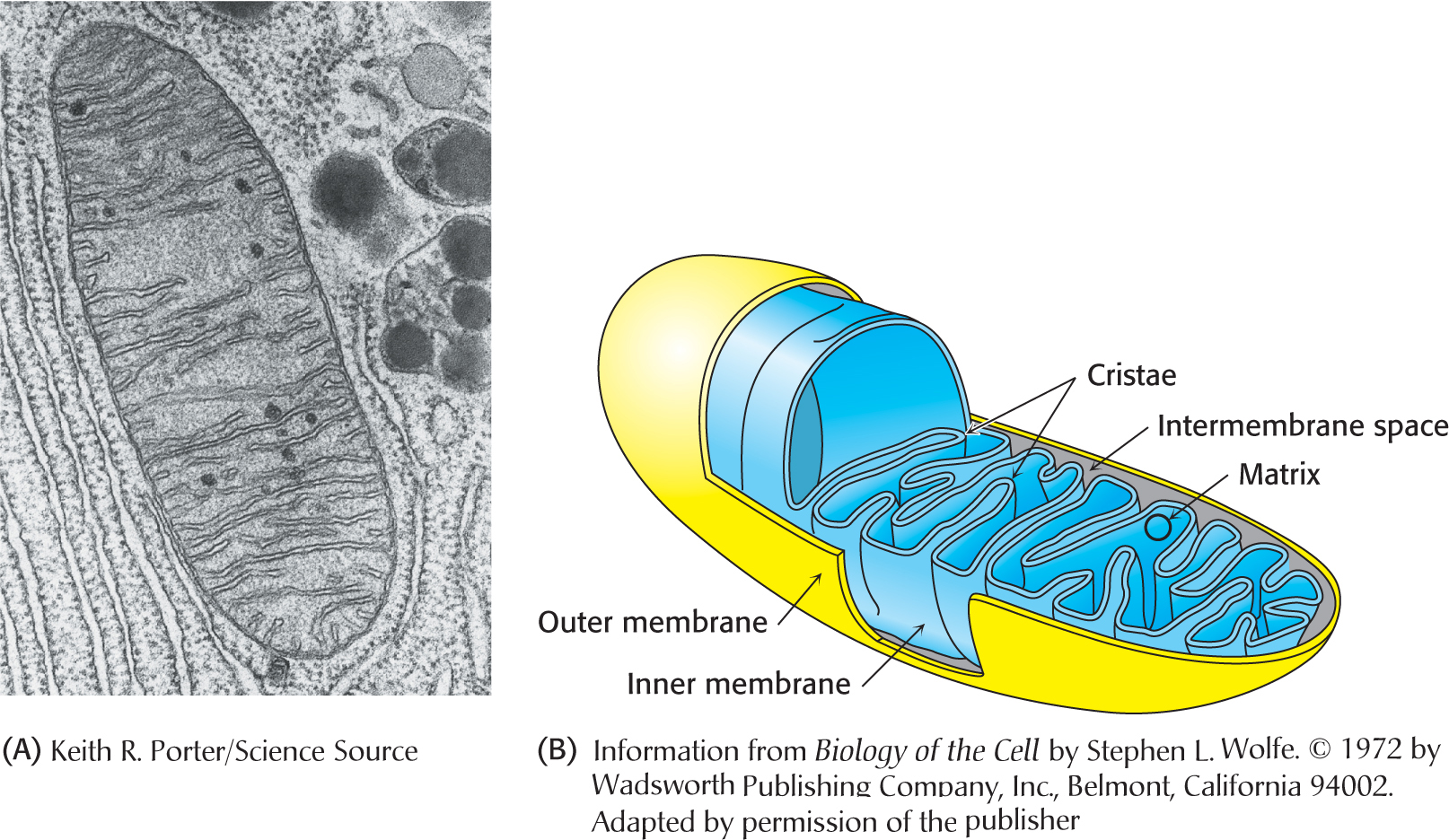20.1 Oxidative Phosphorylation in Eukaryotes Takes Place in Mitochondria
Like the citric acid cycle, the respiratory chain and ATP synthesis take place in mitochondria. Whereas the citric acid cycle takes place in the mitochondrial matrix, the flow of electrons through the respiratory chain and the process of ATP synthesis take place in the mitochondrial inner membrane, a location, as we will see, that is crucial to the process of oxidative phosphorylation.
Mitochondria Are Bounded by a Double Membrane
Electron microscopic studies reveal that mitochondria have two membrane systems: an outer membrane and an extensive, highly folded inner membrane. The inner membrane is folded into a series of internal ridges called cristae. Hence, there are two compartments in mitochondria: (1) the intermembrane space between the outer and the inner membranes and (2) the matrix, which is bounded by the inner membrane (Figure 20.2). The mitochondrial matrix is the site of the reactions of the citric acid cycle and fatty acid oxidation. In contrast, oxidative phosphorylation takes place in the inner mitochondrial membrane. The increase in surface area of the inner mitochondrial membrane provided by the cristae creates more sites for oxidative phosphorylation than would be the case with a simple, unfolded membrane. Human beings contain an estimated 14,000 m2 of inner mitochondrial membrane, which is the approximate equivalent to the area of three football fields in the United States.

365
The outer membrane is quite permeable to most small molecules and ions because it contains many copies of mitochondrial porin, a 30-
!bio! BIOLOGICAL INSIGHT: Mitochondria Are the Result of an Endosymbiotic Event
Mitochondria are semiautonomous organelles that live in an endosymbiotic relationship with the host cell. These organelles contain their own DNA, which encodes a variety of different proteins and RNAs. However, mitochondria also contain many proteins encoded by nuclear DNA. Cells that contain mitochondria depend on these organelles for oxidative phosphorylation, and the mitochondria in turn depend on the cell for their very existence. How did this intimate symbiotic relationship come to exist?

An endosymbiotic event is thought to have taken place whereby a free-
The evidence that modern mitochondria result from a single event comes from examination of the most bacteria-
366
Note that transient engulfment of prokaryotic cells by larger cells is not uncommon in the microbial world. In regard to mitochondria, such a transient relationship became permanent as the bacterial cell lost most of its DNA, making it incapable of independent living, and the host cell became dependent on the ATP generated by its tenant.